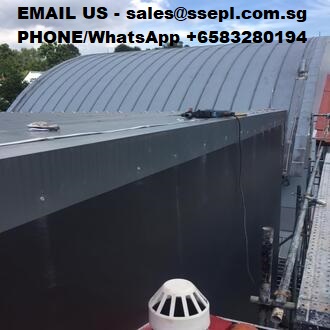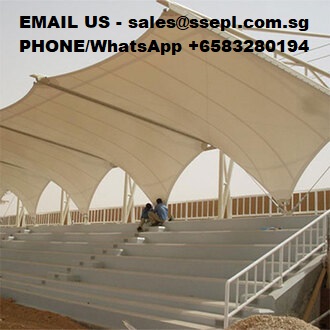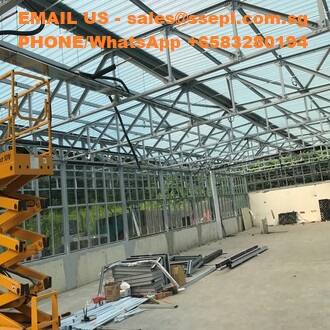When it comes to roofing, many homeowners focus primarily on materials and installation techniques. However, one crucial element that often gets overlooked is roof edge capping. This component not only plays a vital role in the functionality and longevity of your roof but also significantly enhances your home’s aesthetic appeal. In this guide, we’ll explore what roof edge capping is, its benefits, and how to choose the right type for your home.
Singapore Specialized Engineering Pte ltd
Category: Roofing
Roofing L Flashing
L flashing is a type of metal flashing that is shaped like the letter “L.” It is commonly used in roofing applications to direct water away from seams and joints, particularly at the intersections of walls and roofs. The two legs of the “L” form a barrier, preventing moisture from seeping into your home, which can lead to mold, rot, and structural damage.
Designer Roofing
Designer roofing refers to a range of roofing products that combine functionality with aesthetic appeal. Unlike traditional roofing materials, designer options offer unique styles, colors, and textures that can transform the look of your home. Whether you’re aiming for a modern, rustic, or classic appearance, there’s a designer roofing solution to meet your needs.
PVC Corrugated Roofing
PVC, or Polyvinyl Chloride, is a type of plastic that is widely used in various applications, including construction. When it comes to roofing, PVC corrugated sheets provide a lightweight and robust option ideal for both residential and commercial properties. The unique corrugated design adds strength while allowing for efficient water drainage.
Fibre Roofing
Fibre roofing refers to roofing systems made from composite materials that typically include fibres such as fiberglass, cellulose, or synthetic polymers. These materials are engineered to provide superior strength and resilience against harsh weather conditions, making them an ideal choice for roofs in various climates.
GFRC Roofing
GFRC, or Glass Fiber Reinforced Concrete, is a composite material made from a mixture of concrete and glass fibers. This combination enhances the material’s strength, flexibility, and durability while keeping it lightweight. GFRC has been used in various applications, including wall panels, decorative elements, and now, roofing systems.
Interlock Roofing
Interlock Roofing is a premium roofing system made from high-quality materials, typically aluminum or steel, designed to interlock seamlessly. This unique interlocking mechanism provides a robust and secure roofing solution that is perfect for various climates and weather conditions.
Bungalow Roofing
When it comes to home design, bungalows have a timeless appeal. Their low-slung roofs and charming architectural details make them a favorite among homeowners. But how can you ensure that your bungalow’s roof not only looks good but also stands the test of time? In this comprehensive guide, we will explore everything you need to know about bungalow roofing, including styles, materials, and essential maintenance tips.
Metal Roofing For Heat Reduction
Metal roofing is a type of roofing system made from metal pieces or tiles. It is known for its durability, longevity, and low maintenance requirements. Common materials used for metal roofing include aluminum, steel, copper, and zinc. Metal roofs are available in various styles and colors, making them a versatile choice for any home design.
Tempered Glass Roofing
Tempered glass, also known as toughened glass, is a type of safety glass that has been treated with heat or chemicals to increase its strength compared to standard glass. This process makes tempered glass incredibly durable, withstanding high levels of stress and impact. It also shatters into small, blunt pieces rather than sharp shards, reducing the risk of injury.










